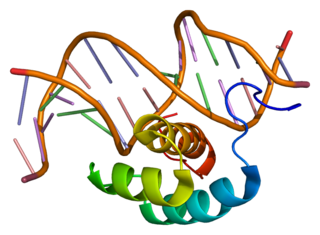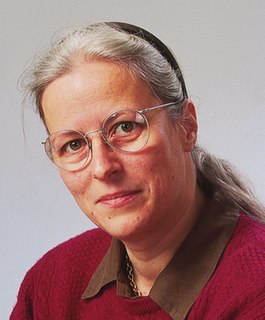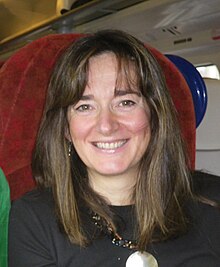
A homeobox is a DNA sequence, around 180 base pairs long, found within genes that are involved in the regulation of patterns of anatomical development (morphogenesis) in animals, fungi, plants, and numerous single cell eukaryotes. Homeobox genes encode homeodomain protein products that are transcription factors sharing a characteristic protein fold structure that binds DNA to regulate expression of target genes. Homeodomain proteins regulate gene expression and cell differentiation during early embryonic development, thus mutations in homeobox genes can cause developmental disorders.

Sir John Bertrand Gurdon is a British developmental biologist. He is best known for his pioneering research in nuclear transplantation and cloning. He was awarded the Lasker Award in 2009. In 2012, he and Shinya Yamanaka were awarded the Nobel Prize for Physiology or Medicine for the discovery that mature cells can be converted to stem cells.
The ParaHox gene cluster is an array of homeobox genes from the Gsx, Xlox (Pdx) and Cdx gene families.
Hox genes, a subset of homeobox genes, are a group of related genes that specify regions of the body plan of an embryo along the head-tail axis of animals. Hox proteins encode and specify the characteristics of 'position', ensuring that the correct structures form in the correct places of the body. For example, Hox genes in insects specify which appendages form on a segment, and Hox genes in vertebrates specify the types and shape of vertebrae that will form. In segmented animals, Hox proteins thus confer segmental or positional identity, but do not form the actual segments themselves.

Homeobox protein Hox-A5 is a protein that in humans is encoded by the HOXA5 gene.

Homeobox protein Hox-A11 is a protein that in humans is encoded by the HOXA11 gene.

Homeobox protein Hox-B4 is a protein that in humans is encoded by the HOXB4 gene.

Homeobox protein Hox-A7 is a protein that in humans is encoded by the HOXA7 gene.

Homeobox protein Hox-A3 is a protein that in humans is encoded by the HOXA3 gene.

Homeobox protein Hox-D1 is a protein that in humans is encoded by the HOXD1 gene.
Cheryll Anne Tickle is a distinguished British scientist, known for her work in developmental biology and specifically for her research into the process by which vertebrate limbs develop ab ovo. She is an Emeritus Professor at the University of Bath.

Homeobox protein Hox-A2 is a protein that in humans is encoded by the HOXA2 gene.

Edward Michael De Robertis is an American embryologist and Professor at University of California, Los Angeles, whose work has contributed to the discovery of conserved molecular mechanisms of embryonic inductions that cause tissue differentiations during animal development.

P19 cells is an embryonic carcinoma cell line derived from an embryo-derived teratocarcinoma in mice. The cell line is pluripotent and can differentiate into cell types of all three germ layers. Also, it is the most characterized embryonic carcinoma (EC) cell line that can be induced into cardiac muscle cells and neuronal cells by different specific treatments. Indeed, exposing aggregated P19 cells to dimethyl sulfoxide (DMSO) induces differentiation into cardiac and skeletal muscle. Also, exposing P19 cells to retinoic acid (RA) can differentiate them into neuronal cells.

Rosa Susan Penelope Beddington FRS was a British biologist whose career had a major impact on developmental biology.

Retinal homeobox protein Rx also known as retina and anterior neural fold homeobox is a protein that in humans is encoded by the RAX gene. The RAX gene is located on chromosome 18 in humans, mice, and rats.

Clifford James Tabin is chairman of the Department of Genetics at Harvard Medical School.

Hox genes play a massive role in some amphibians and reptiles in their ability to regenerate lost limbs, especially HoxA and HoxD genes.
Kate Gillian Storey is a developmental biologist and head of Division of Cell & Developmental Biology at University of Dundee.
Robb Krumlauf is an American developmental biologist. He is best known for researching the Hox family of transcription factors. He is most interested in understanding the role of the Hox genes in the hindbrain and their role in areas of animal development, such as craniofacial development. Krumlauf worked with a variety of renowned scientists in the field of developmental biology throughout his time researching Hox genes.












